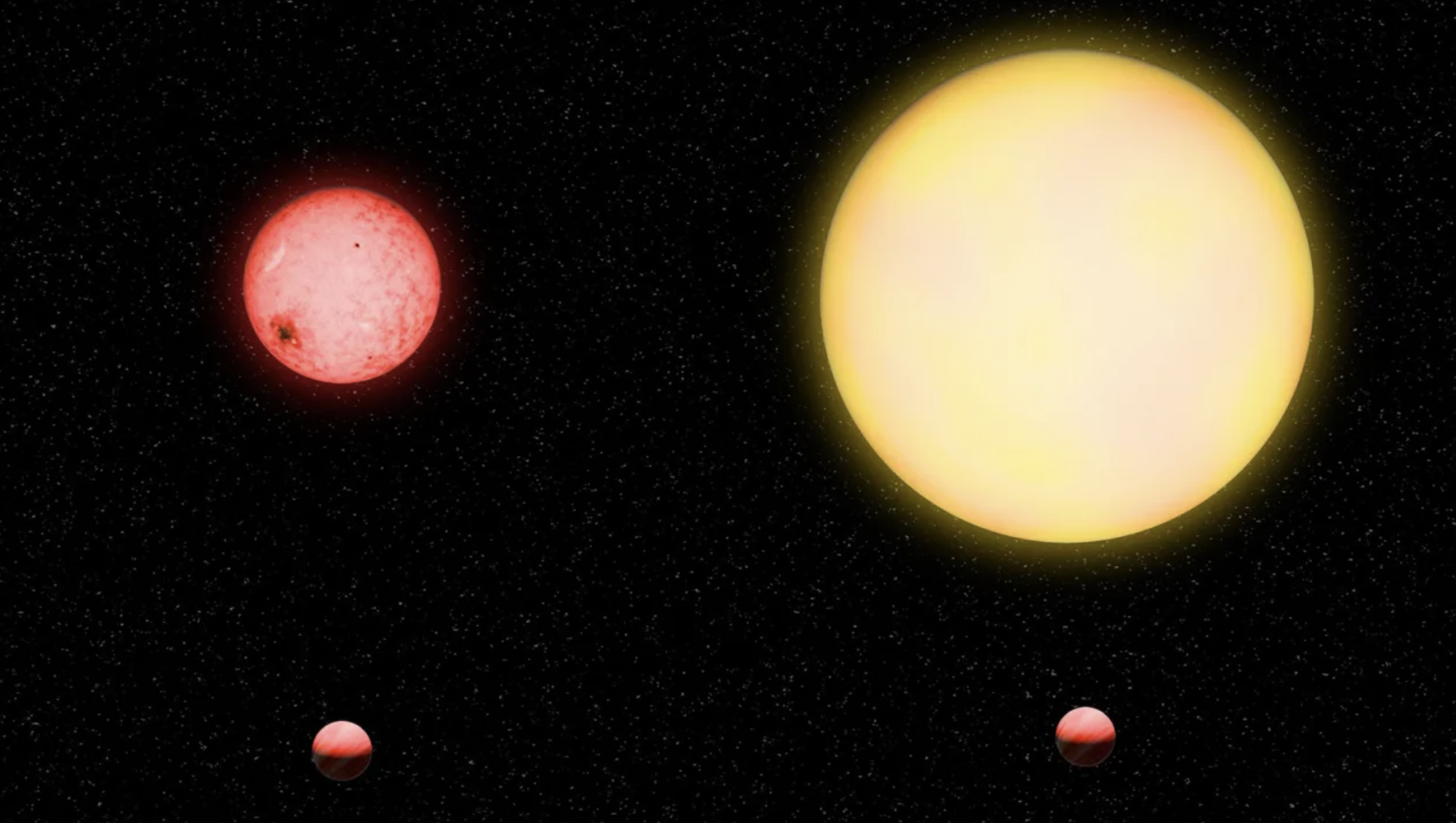
Astronomers have discovered an unexpectedly large planet orbiting a small star about 280 light-years from Earth.
Because of the unexpected size of the new world TOI 5205b, researchers have dubbed it the “forbidden planet”.
It is the size of Jupiter and was discovered by NASA’s TESS satellite. Jupiter is the largest planet in our solar system.
The satellite, launched in 2018, examines the light from the nearest and brightest stars to detect changes in their brightness that indicate the presence of planets orbiting these stars. The TESS mission has found evidence of thousands of possible planets.
The exoplanet orbits a “red dwarf” called TOI-5205, which is about 40% the size and mass of our Sun and has a surface temperature of around 3127 degrees Celsius (compared to 5527 degrees Celsius for the Sun).
The M dwarf star is smaller, colder, and redder than our own star. These faint stars are among the most common in the universe, and in recent years astronomers have discovered that planets usually orbit M-dwarfs.

unexpected discovery
Astronomers didn’t expect giant planets to orbit such small stars, but that’s exactly what they found when they took a closer look at the TOI-5205 planetary system.
A study detailing the results was published Tuesday in The Astronomical Journal.
“The star TOI-5205 is only four times the size of Jupiter, but it somehow managed to form a Jupiter-sized planet around itself, which is very amazing,” study author Shabham said in a statement. Carnegie Institute of Science in Washington DC.
Astronomers have discovered other gas giants orbiting older M-class dwarf stars, but TOI 5205b is the first gas giant discovered orbiting a relatively low-mass M-class dwarf.
The researchers compared the planet to a pea revolving around a lemon. In our solar system, Jupiter can be likened to a pea orbiting a grapefruit (representing our Sun).
When TOI 5205b passes “in front” of a star (in an imaginary line with the NASA telescope), the planet blocks 7% of its light.
The discovery of this particular planetary system challenges theories of planet formation. “The existence of TOI-5205b expands our knowledge of the disks of material in which these planets are born,” Kanodia said.
Researchers want to monitor the planet in the future with the James Webb Space Telescope, which could determine if TOI-5205b has an atmosphere and uncover more secrets about its formation.
Source: CNN
Source: Kathimerini
Ben is a respected technology journalist and author, known for his in-depth coverage of the latest developments and trends in the field. He works as a writer at 247 news reel, where he is a leading voice in the industry, known for his ability to explain complex technical concepts in an accessible way. He is a go-to source for those looking to stay informed about the latest developments in the world of technology.